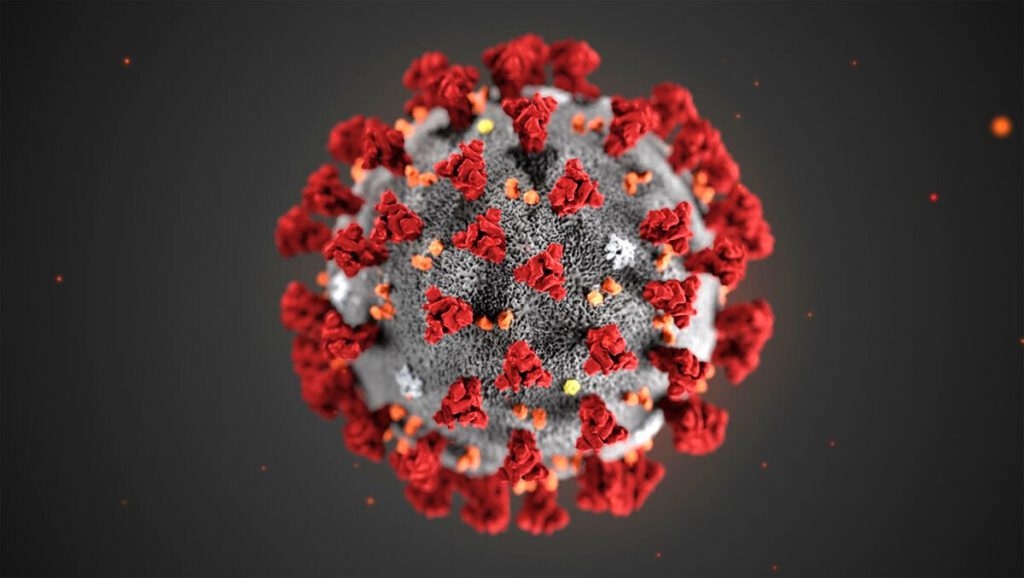Wisconsin Has Fastest COVID-19 Spread In U.S.
New study has alarming figures, with spread coming since state shutdown ended.
Wisconsin’s COVID-19 reproductive rate, the number of people expected to be newly infected from a single confirmed case, is now the worst in the nation.
That’s according to Rt.live, a website that relies on an open-source model and data from the COVID Tracking Project to estimate the R-value or reproductive rate of the disease’s spread on a state-by-state basis.
The report was last updated Tuesday morning with Wisconsin jumping ahead of Montana. Wisconsin’s rate is estimated to be between 1.09 and 1.66 with an estimate of 1.39. The model estimates it has been climbing since May 12th when it had hit a bottom of 0.83. May 12 was the day before a Wisconsin Supreme Court decision ruled that the state Health Department’s stay-at-home order was unconstitutional and must be ended.
“We are currently experiencing a surge in COVID-19 cases throughout the state,” said Department of Health Services Secretary-designee Andrea Palm during a press conference on Tuesday afternoon.
But if Wisconsin has a worst in the nation rate, why is the state not making headlines like others for hospital shortages?
A large number of the new cases are in younger people, a population that has lower hospitalization and death rates.
The lagging indicators are both near three month lows, but that could change.
“The danger is that these transmission networks are going to continue until they get to older folks,” said Dr. Ryan Westergaard, Chief Medical Officer of the DHS Bureau of Communicable Diseases. Over 70 percent of the state’s COVID-19 deaths have been people age 70 or older.
Palm characterized the situation in Arizona and Florda, where thousands of new daily cases have been reported and hospital capacity is dwindling, as an opportunity to correct course.
“We have been lucky in Wisconsin that both in March and April, and now in June and July, we weren’t on the leading edge,” she said. “It is an opportunity for us to heed the caution to do the things we can and should do together.”
“It’s a different situation in terms of the magnitude, but we are going similarly in the wrong direction,” said Westergaard in comparing to the southern states experiencing a surge. “The other thing that is very concerning is that it seems like the reasons things are going up are the same reasons.” He cited indoor gatherings as a primary driver.
“Our general guidance around large gatherings is that they are risky,” said Palm. She said contact tracing has revealed 20 percent of new cases in June were people that said they attended a “mass gathering,” which includes going to a bar or restaurant. The figure doesn’t include people that those individuals then infected.
“The stage is set for the same things happening in other areas of the country to happen in Wisconsin unless we do things to turn things around,” he said.
What can the state do?
So what about a mask mandate? Dane County now has one from an emergency health order and the City of Milwaukee’s legislative body is debating one.
“We support local health officers making that decision based on the science and what’s happening on the ground,” said Evers.
The governor said he hasn’t ruled out issuing new statewide orders, though he admits they might not stick.
Recalling a conversation with an unnamed male business leader in the past week, Evers said he was asked to put in a new statewide order.
“I talked to him about the chance of Republicans challenging it in court, which is 100 percent, and the chance for us losing in the Supreme Court which is probably pretty close to 100 percent,” said the Governor. “He said do it anyway.”
In the meantime, Evers has a message for how people can help slowing the spread of the virus.
“Staying home continues to be the best way to prevent getting and spreading this virus,” he said.
If you think stories like this are important, become a member of Urban Milwaukee and help support real, independent journalism. Plus you get some cool added benefits.
More about the Coronavirus Pandemic
- Governors Tony Evers, JB Pritzker, Tim Walz, and Gretchen Whitmer Issue a Joint Statement Concerning Reports that Donald Trump Gave Russian Dictator Putin American COVID-19 Supplies - Gov. Tony Evers - Oct 11th, 2024
- MHD Release: Milwaukee Health Department Launches COVID-19 Wastewater Testing Dashboard - City of Milwaukee Health Department - Jan 23rd, 2024
- Milwaukee County Announces New Policies Related to COVID-19 Pandemic - County Executive David Crowley - May 9th, 2023
- DHS Details End of Emergency COVID-19 Response - Wisconsin Department of Health Services - Apr 26th, 2023
- Milwaukee Health Department Announces Upcoming Changes to COVID-19 Services - City of Milwaukee Health Department - Mar 17th, 2023
- Fitzgerald Applauds Passage of COVID-19 Origin Act - U.S. Rep. Scott Fitzgerald - Mar 10th, 2023
- DHS Expands Free COVID-19 Testing Program - Wisconsin Department of Health Services - Feb 10th, 2023
- MKE County: COVID-19 Hospitalizations Rising - Graham Kilmer - Jan 16th, 2023
- Not Enough Getting Bivalent Booster Shots, State Health Officials Warn - Gaby Vinick - Dec 26th, 2022
- Nearly All Wisconsinites Age 6 Months and Older Now Eligible for Updated COVID-19 Vaccine - Wisconsin Department of Health Services - Dec 15th, 2022
Read more about Coronavirus Pandemic here






















